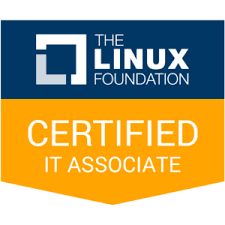Exam Overview
Since I announced I was part of the team of individuals who helped develop the new Linux Foundation Certified IT Associate (LFCA) exam. I have been bombarded with questions. The majority of these questions I simply will not answer. The Linux Foundation maintains a separation between exam developers and trainers to protect the integrity of the certification.
However, many have asked questions about where to find materials to prepare for the certification, since a specific training course wasn’t released along side the exam. To those questions, I would mention that the Linux Foundation offers free introduction courses that are linked right on the exam page. These same courses have topics that cover the vast majority of the listed exam domain subjects.
Nonetheless exam its self is 60 multiple choice questions with an exam time of 90 minutes. Its also proctored virtually by PSI, alongside all of the other Linux Foundation exams. To support those taking the exam, I pulled together the exam domains, voucher, and handbook links to provide them bellow in a single place. I also provided a list of the free courses listed on the LFCA training page. Additionally, I re-ordered the courses based on pervious experience with the training materials and how the topics listed in the courses map to the exam domain subjects.
LFCA Exam Domains
The following is the full list of the exam domains and subjects covered directly from the certification documentations.
- Linux Fundamentals – 20%
- Linux Operating System
- File Management Commands
- System Commands
- General Networking Commands
- System Administration Fundamentals – 20%
- System Administration Tasks
- Networking
- Troubleshooting
- Cloud Computing Fundamentals – 20%
- Cloud Computing Fundamentals
- Performance / Availability
- Serverless
- Cloud Costs and Budgeting
- Security Fundamentals – 16%
- Security Basics
- Data Security
- Network Security
- System Security
- DevOps Fundamentals – 16%
- DevOps Basics
- Containers
- Deployment Environments
- Git Concepts
- Supporting Applications and Developers – 8%
- Software Project Management
- Software Application Architecture
- Functional Analysis
- Open-source Software and Licensing
Free Training from the Linux Foundation
These core courses offer roughly 120 hours of free material that relate directly to the exam domains.
- Introduction to Linux – An introduction course to help build up the foundational Linux, system administration, and security knowledge listed in the core exam domains.
- Basics of Cloud Computing – An introduction course that covers cloud infrastructure and the technologies that drive delivery. This course relates to the Cloud Computing Fundamentals exam domain.
- DevOps Fundamentals – An introduction course to the principles and practices of development operations (DevOps). This course relates directly to the DevOps fundamentals exam domain.
These additional recommended courses that relate to one or more exam domains and provide additional detail.
- Introduction to Kubernetes – An more in-depth dive into Kubernetes as a tool for containerized infrastructure. Highly recommended for those looking to break into the cloud space and/or purpose the CKA Exam.
- Open Source Licensing – Open source software is now everywhere and the licensing can be very confusing at first. This course offers a clear and concise coverage of licensing, for those who may not encounter it often.
- Beginners Guide to Software Development – This next course provides a basic introduction into the key concepts for open source software development. This course will give those who don’t develop software often, just enough to be dangerous.
LFCA Exam and Resources
- LFCA Exam Voucher – This is the official Linux Foundation Certified IT Associate (LFCA) training page to purchase the exam voucher. This includes a retake if you don’t pass the exam on the first attempt.
- LFCA Handbook – Exam specific handbooks are provided for all Linux Foundation exams and LFCA is no exception. Reading through the handbook will answer common questions regarding the exam, provide an introduction to the exam environment, and help calm some of the pre-exam nerves.
